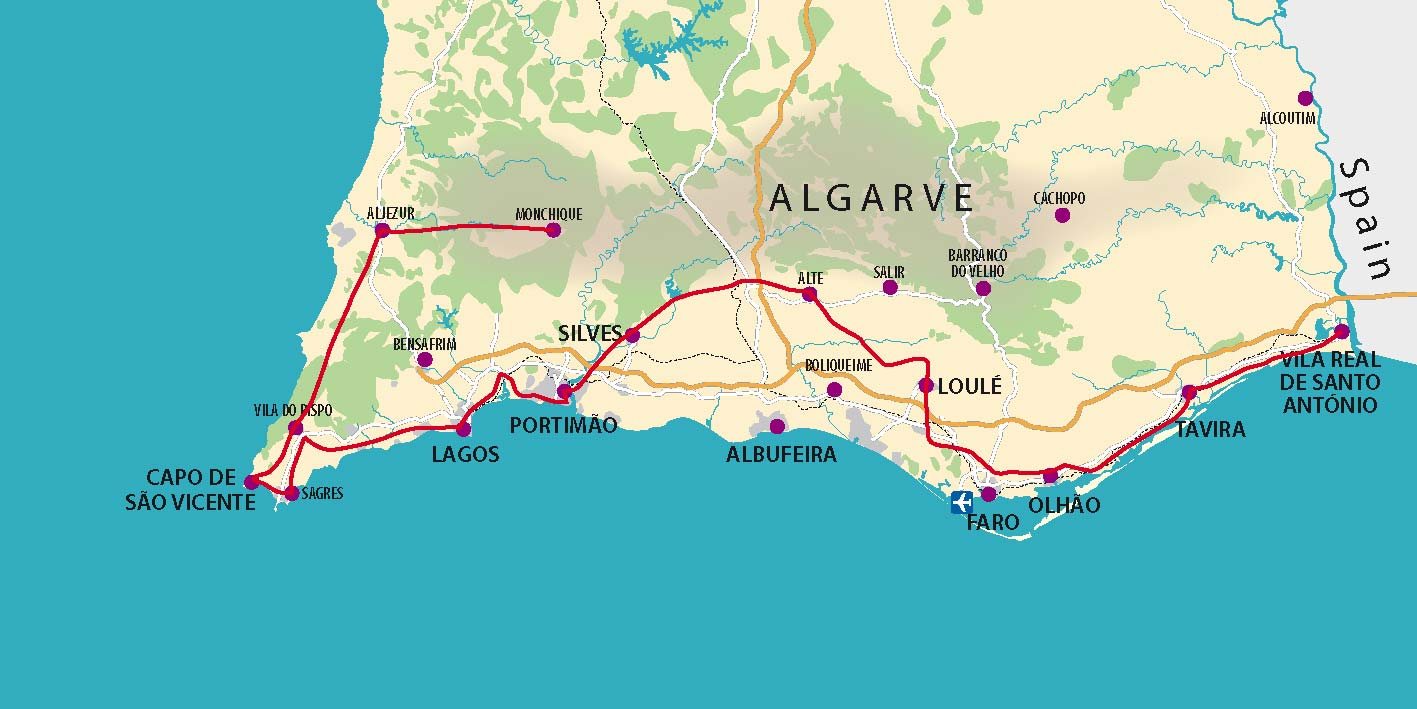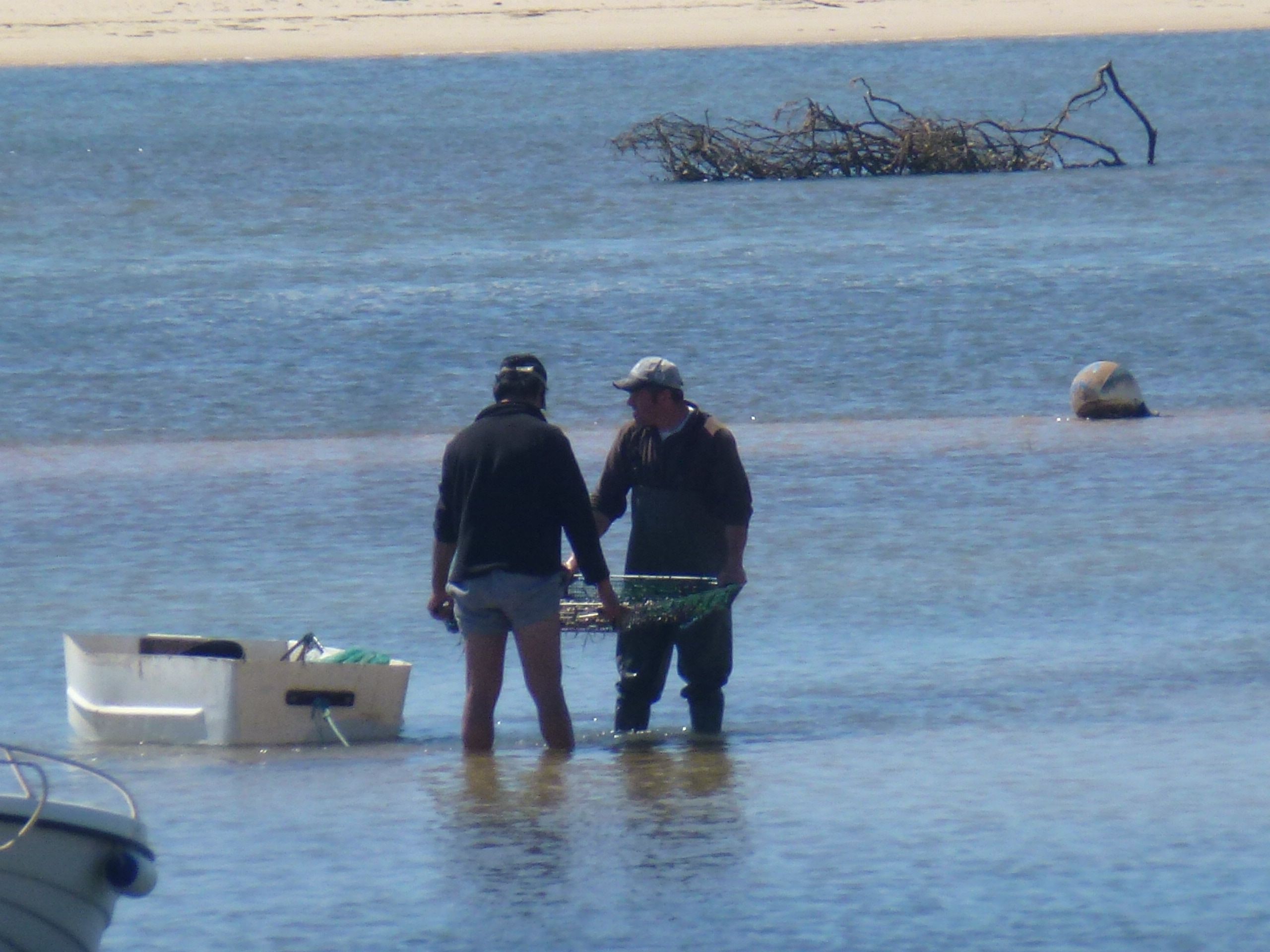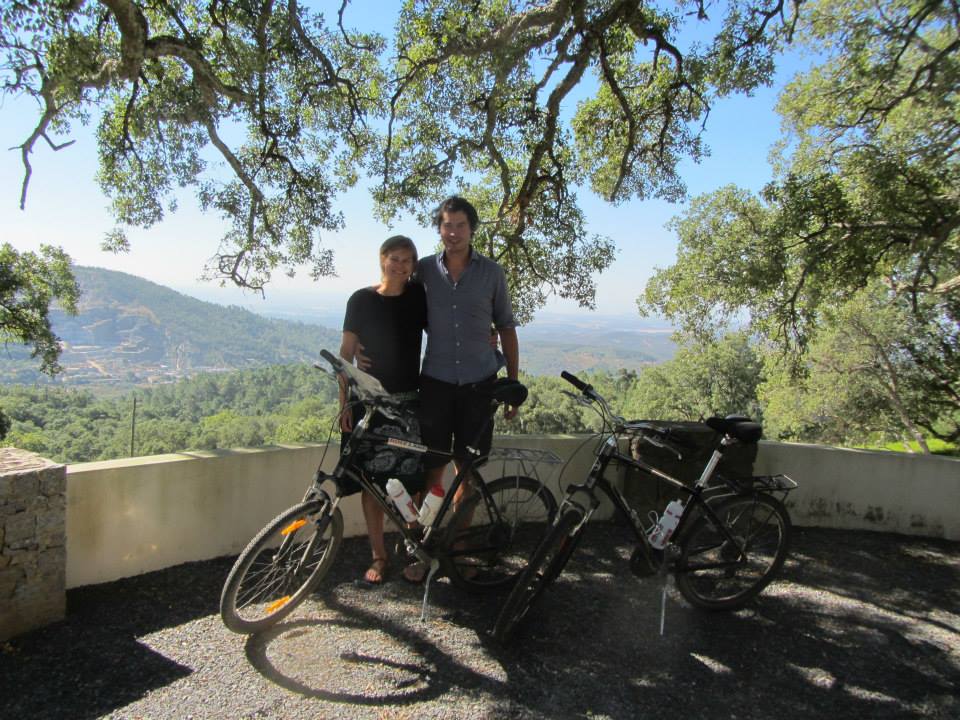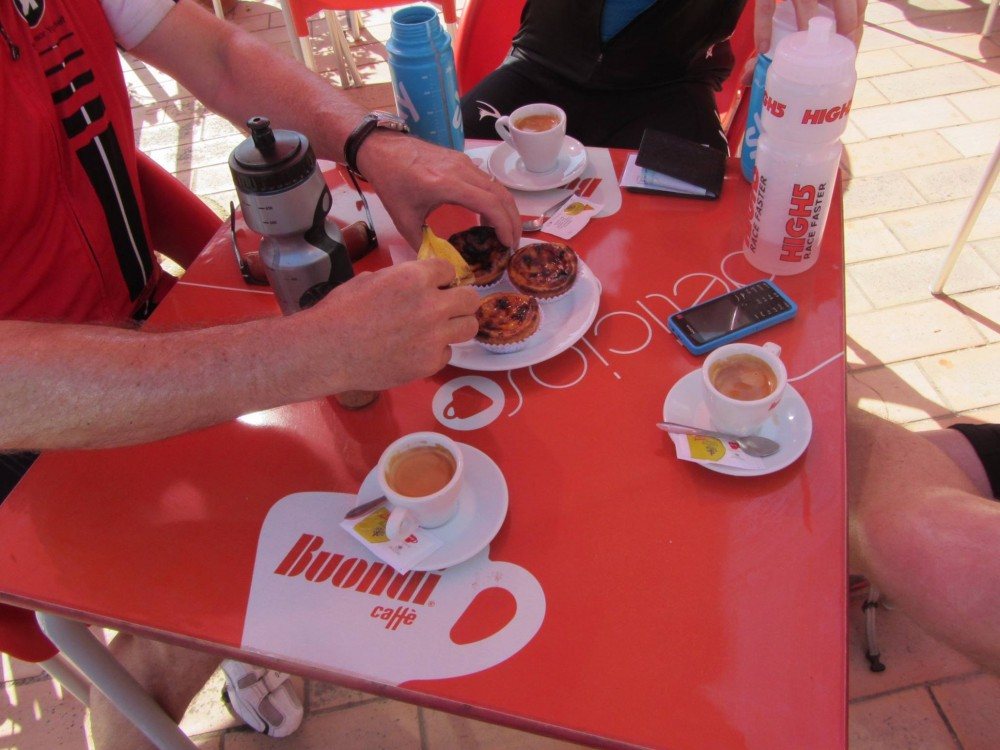General
Best of the Algarve 13 nights
Activity: Self guided touring holiday
Bike type: Touring bike (optional e-bike)
Duration: 13 nights
Activity Level: Reasonably experienced
Accommodation: 3 star and 4 star hotels
Daily Average: 30km
Price: From €1915
Travelling from East to West along mainly quiet roads and tracks, this self-guided tour biking holiday introduces you to what we think are some of the best bits of the Algarve. With a rest day roughly halfway through each week, it’s designed to be a gentle and relaxing trip, with daily opportunities to linger longer or venture ‘off-piste’ to explore this spectacularly beautiful region.

Reviews
The “Best of the Algarve 13 Night” tour was just excellent. It provided a mix of coasts, beaches, urban, rural, mountains, hills, just a great cross section of the Algarve and its attractions. The daily distances provided lots of opportunity to stop at the numerous points of interest or just to take a break sitting against a tree. The hotels were overall very good. A total standout among the hotels was the Vila Lido in Praia da Rocha. Absolutely stunning and beyond a doubt the best welcome and staff we have ever had the pleasure to encounter.
The GPS was reliable, you just have to learn to trust it. At a couple of locations the map directions were a bit hard to follow, but getting a bit lost just added to the enjoyment. We appreciated that the route really was on “quiet roads and trails” for the most part and where we were on busier roads there was a shoulder so we felt fairly safe. Thanks to Paul, Fred and the Algarve Bike Holiday crew for helping to make the bike tour a fantastic, fun time.
Itinerary
Day 1 Arrival at Vila Real de Santo António
Upon your arrival in the Algarve, we will collect you and take you to Vila Real de Santo António (VRSA), an interesting old town on the banks of the Guadiana River, which forms a natural border between Portugal and Spain.
Largely redeveloped after the great earthquake of 1755, VRSA was recreated on a grid system, yet still retains a character of its own. It has a relaxed atmosphere and the central square, edged with orange trees and host to an array of shops and cafes, is an ideal place to spend your first evening; enjoy a spot of people watching as you tuck into some fresh local food and wine. This should get you in the mood before you set off on your trip across the Algarve.
Day 2 Cycle to Tavira: (31km/214m elevation gain)
Your first day’s cycling takes you through a number of seaside towns, all with their own special characteristics. The first of these is Monte Gordo, a resort that has been popular since the 70s. There’s a wide promenade that’s popular with cyclists of all description, and a vast, flat sandy beach that is the town’s main attraction. It’s a pleasant start to your ride, though in the hotter months you may be relieved to reach the shade of one of the largest forests in the Algarve, the Mata Nacional da Dunas Litorais. Cycling along sandy trails, with the aromas of pine and other wild flora will give you a real zest for the day ahead.
Next comes a pleasantly sleepy town, Manta Rota. It’s worth a quick stop to look at the unspoilt beach, but if you can hold out a little longer continue to Caçela Velha, a tiny whitewashed village set on a hill overlooking the lagoon with a little church and the remains of an 18th century fort. You will certainly want to linger here to take in the view. It’s neighbour, Fabrica, is also a worthwhile diversion; sipping coffee by the water’s edge, you can take in the boats dipping in the gently ebbing water and watch locals collecting shellfish.
From here you’ll enjoy a relaxing ride along dirt tracks and quiet roads, through the picturesque fishing village of Cabanas, before passing by the salt flats into Tavira. Home to a castle, an old Roman bridge and a wealth of traditional architectural styles, Tavira is built either side of the River Gilão, which creates two distinct halves to the town. Several cafés and many restaurants make the town an easy place to stay and have a relaxing wander around. The hotel overlooks the river and all that the town has to offer is within easy walking distance.
Day 3 Cycle to Olhão: (31km/182m elevation gain)
After a fairly gentle route along the coast, through the quaint seaside village of Santa Luzia, famous for octopus fishing, you will continue to Pedras del Rei, where you may spot the little train that takes sunbathers to the beach of Barril and the old tuna fishing village.
Your next stop is Fuseta, where several fish restaurants with outdoor charcoal grills and excellent views across the water will make this a tempting place to stop for lunch. From here you join the Ecovia Litoral (a dedicated cycling path that spans across the Algarve from East to West). You are now in the Ria Formosa Natural Park, a UNESCO heritage site situated on low-lying coastline amidst a maze of lagoons, channels, salt marshes and islands. The views across the salt flats, (where salt is still cultivated using traditional methods), are simply breathtaking. It is a gentle, flat ride along the coast and you can enjoy the cooling sea breeze coming from the Atlantic ocean.
Your final destination is Olhão, still the hub of the fishing industry, but with a charming old town, renowned for its Moorish style architecture. It’s the perfect place to sample local specialities at local prices! If time allows you can take a ferry to one of the small islands, just a short hop, where deserted beaches and more great fish restaurants can be found.
Day 4 Cycle to Loulé: (32km/418m elevation gain)
Today’s ride heads into the hills, through quiet villages, small hamlets and working farmland, where you will begin to see a different side to this region. It’s a genuine opportunity to soak up the relaxed atmosphere that is the cornerstone of life in the real Algarve. Here, in one of the many roadside cafés, you can experience the soul of the community. Plus, you will no doubt pick up some of the best tasting coffee and homemade cakes for a fraction of the price you pay on the coast!
After a meandering ride through the countryside you will approach the outskirts of Almancil, a busy working town and the furthest point north of what is known as the Golden Triangle (where luxury accommodation and golf courses are in abundance). More interestingly, on the edge of town is São Lourenço Church, with some fine examples of the intricately painted tiles for which Portugal is famous, as well as an impressive golden altar. This Baroque style church is open to visitors, so it’s a good idea to try and time your ride so you can take a quick peek.
Your destination for the night is Loulé, a thriving old market town, where your hotel is conveniently situated right in the centre, making it easy to navigate your way around.
Day 5 Rest Day in Loulé
Today you will have an opportunity to take a short break from the saddle and get to know Loulé. It’s an explorer’s haven, with narrow cobbled streets leading off the central Avenida, tiny shops and hidden away bars and restaurants. You could easily spend the morning strolling through the fascinating old town with its quaint old buildings, visiting the town’s art galleries, museums and chapels, picking up souvenirs at the indoor market. You can lunch at one of the many cafes or restaurants that serve fresh local produce and are frequented as much by locals as visitors, leaving the afternoon to relax by the roof top swimming pool at your hotel.
Day 6 Cycle to Alte: (38km/684m elevation gain)
This is a more challenging day of riding as you navigate your way through the rolling hills to the north of Loulé, but worth the effort for the tremendous scenery.
Leaving town it won’t be long before you notice the levels of traffic decrease as you cycle towards the hill-top village of Querença. It’s a short hop up to the beautiful church square, where you can enjoy some local biscuits with your morning coffee. Querença is well known for its agricultural products, just as the rather strong “medronho” (a sort of fruit brandy) and the famous “chouriço” (smoked sausage). In fact they even hold an annual sausage festival, which draws visitors from far and wide.
But it’s sitting outside the authentic and welcoming cafe, taking in the tranquil setting and beautiful backdrop of the small church that we think is the real attraction here. You will need to tear yourself away from this but there is a lot more to see as you cross the valley to join a surprisingly traffic-free main road that is punctuated by small towns and villages. With sweeping country scenes to your left and right, this road leads you past the traditional working town of Salir, where you can add a quick loop that takes in Rocha de Pena, a natural rock that offers 360 degree views if you are energetic enough to climb to the top.
Finally, you will reach the charming village of Alte, famous for its white painted houses and fresh water springs. There is a beautiful church in the centre of the village, surrounded by cafes and craft shops, selling locally produced goods. A coffee and pastel de nata (custard tart) on the back terrace of the pasteleria, Agua Mel, is a must. A short stroll around the village will reveal some lovingly restored houses and lots of little surprises, including a village donkey!
Day 7 Cycle to Silves: (34km/240m elevation gain)
Leaving the village on the West side, just past the cemetery, you will cycle quiet, undulating roads to Messines – a typical agricultural town, with narrow streets and yet another church as the centre piece. On the other side of town you will enter lush green valleys, with tiny hamlets and farmsteads amidst an abundance of thick vegetation. Following some fabulous dirt tracks you will then skirt the Barragem do Arade (a huge reservoir that is one of a few providing much needed water to the region) where, again, you can expect to be overwhelmed by the totally unspoilt surroundings and dramatic views. There’s a little climbing involved, but you get to cycle across the huge dam and then freewheel down afterwards, so you’re well rewarded.
You will most certainly want to make the most of your stay in Silves, an enchanting town on the banks of the Rio Arade. Steeped with history, Silves was once the Moorish capital and is home to the best-preserved castle, in the Algarve. The views from the castle over the town and the surrounding countryside justify the rather steep ascent along narrow cobbled streets. There’s a café just by the entrance to the castle where they play live music, a great spot to wile away an hour or two. Host to an annual Medieval Festival, one of the biggest in the region, Silves is ordinarily a sleepy town, where you get the real feeling of taking a step back in time as you wander through the myriad of back streets.
Day 8 Cycle to Praia da Rocha: (17km/187m elevation gain)
It’s a short hop down to the coast, today, so you can take you time and enjoy a relaxing day’s cycling. Before you leave Silves, it’s worth stopping for a moment as you cross the Roman bridge; the view of the town and castle from the other side of the river is one of the best, so have your camera ready. From here, you can follow a much frequented track alongside the Rio Arade, which eventually leads you up and over the hills to Estombar, another very typical Portuguese village, virtually untouched by the development of mass tourism in the region. From here you will head to the coast and to Ferragudo, a pretty village overlooking the estuary.
Try to time your arrival around lunchtime, as there are some fabulous fish restaurants both in the town square and by the waters edge. You will probably wish to linger a while as this is your last haven of peace and tranquility before you head over the bridge into Portimão, the Western Algarve’s biggest town. You may be struck by the sudden increase in activity as you cross the river, but you can easily wend your way along the waterfront, avoiding the centre of town, around to the beautiful seaside resort of Praia da Rocha and your lovely guesthouse that overlooks the ocean. With one of the largest beaches in the Algarve and some scenic cliffs to the West, it is easy to see why Praia da Rocha has developed into a major holiday resort.
Day 9 Cycle to Lagos; (31km/220m elevation gain)
Today’s ride takes you along the coast you come to the fishing village of Alvor, one of the quieter resorts, but growing in popularity. Although the earthquake wiped out most of the traditional Moorish village in 1755, you can still see remains of Alvor’s history in places such as the 16th century church. Alvor’s buildings are still mainly low-rise and the charm of the old town still remains, with the narrow cobbled streets leading down to the riverfront, where you can enjoy a leisurely coffee and watch the fishing boats. From here you will need to head inland briefly (unless you can find a friendly boatman!) to negotiate around the estuary and back down through country lanes to the 4km long Meia Praia beach and on towards Lagos. It’s a bustling town with lots to offer; from the modern marina and waterfront restaurants, to the lively town square and the maze of cobbled streets within the old city walls, there is plenty to explore.
For dinner there are plenty of places to choose from, including traditional local restaurants, tapas bars, cafes and bakeries, plus lots of international options. Many of these are concentrated around the marina, the river and the old town, all of which provide a very pleasant backdrop whilst you enjoy your meal.
Day 10 Cycle to Sagres: (42km/615m elevation gain)
Today’s ride will prove more challenging as you encounter the hills that hug the coastline between Lagos and the rugged cliffs of Sagres.
But, as always, there’s a positive, because along the way you can enjoy the refreshing sea air and you will have opportunities to take a break in some very pretty coastal towns and villages. Luz, for example, is a sprawling seaside town with a long promenade, often host to local market stalls and artists displaying their work.
Just a few kms West of Luz are the tiny villages of Burgau and Salema, which have few amenities in comparison to Luz, but both exude a specific charm that attracts day visitors throughout the year, so worth a swift diversion.
The next stage of your ride today will take you along some quiet back-roads and tracks towards Vila de Bispo, where you will join the final leg that transports you across a dramatic, weather beaten landscape towards Sagres, where you will spend the night.
Day 11 Rest Day in Sagres
Sagres is a truly tranquil town with beautiful beaches, a picturesque harbour, a very pretty town square and stunning views. It is very popular in summer with visitors, but all year round with fishermen and surfers because of the western Atlantic waters creating such good waves for surfing. It is mostly known as the place where Henry the Navigator brought together great mariners, astronomers, ship-builders and cartographers to build and navigate great ships in the period of the Age of Discoveries. Sagres is also home to Henry’s fortress, which was originally built in the 15th century. Further along from the fort, is the headland, Cabo de São Vincente (“Cape St. Vincent”). It’s a bracing ride (12km round trip) along the cliffs to the imposing lighthouse (claimed to be one of Europe’s most powerful lighthouses) and the views from the point are simply breathtaking.
Day 12 Cycle to Aljezur: (54km/750m elevation gain)
Having reached ‘the end of the world’ as Cape St. Vincent is historically known (being the furthermost point in Western Europe), it’s time to head North along the unspoilt western coastline of Portugal. After finding your way back to Vila de Bispo, through the wild flowers and along the rugged rocks of the clifftops, you will join a long tree-lined road that stretches for miles. An ancient village, Pedrelva, that has been brought back to life from being a cluster of abandoned ruins, is perhaps worth a quick detour. Otherwise, the long undulating road is ideal for getting some decent kilometres under your belt before a possible lunch stop at Carrapateira.
Carrapateira is a village of fisherman and farmers alike and the perfect spot to take a little time out. From the easily accessible peninsula at Pontal da Carrapateira, you can enjoy dramatic views of the cliffs and crags dropping to the Atlantic and, on a clear day, you should see the Sagres lighthouse in the distance. Whilst to the North you will see the immense Bordeira beach and sand dunes, from where you can observe the action-packed surfing, which is huge in this area.
Progressing northwards, the scenery changes as you approach your overnight stay in Aljezur, an ancient Moorish town situated in a lush green valley and built on either side of a river that runs through the valley. You have now entered the “land of the sweet potato” of which Aljezur is deemed the “capital”. It’s said that they produce the tastiest varieties because of the weather conditions and the sea air. So it’s probably the best place to sample it cooked in one of a few traditional methods. If you happen to be there in October/November, they even have an annual Sweet Potato Festival.
Day 13 Cycle to Monchique: (35km/1210m elevation gain)
Your final day’s riding is shorter but challenging and it is well worth it. Your destination, Monchique, is a market town up in the Serra de Monchique, which is a thickly wooded mountain range separating the Algarve from the winelands of the Alentejo. The journey up to Monchique offers spectacular scenery and is totally different from coastal Algarve.
Heading out of Aljezur, you will embark on a steep ascent towards the tiny hamlet of Pedascas, where you will begin to appreciate your efforts as you enjoy the views to the South across the Algarve. The road becomes more undulating as you approach Marmelete, where there is a roadside café that is accustomed to serving sugar and caffeine in various forms to those tackling this breath-taking climb. After Marmelete the route is more forgiving as you meander around the pine-covered hilltops and descend through some of the steep valleys that surround Monchique.
Monchique is, indeed, a perfect place to finish your journey; a quiet and relaxed town, with friendly locals and some fabulous restaurants with views to die for. If you feel in need of some pampering, neighbouring Caldas de Monchique is home to some traditional thermal baths, where you can rest your aching legs as you enjoy some rather special spa treatments.
But you may well be feeling energised and what better way to complete your adventure than make the final 8km climb up from Monchique to Foia, the highest peak in the Algarve? It’s an iconic route that is undertaken by local and pro riders alike but, most importantly, on a clear day, you get the best views across the Algarve right down to the coast.
Day 14 Departure
We will transfer you from your accommodation for your journey home.
Prices
| January | €1915 |
| February | €1915 |
| March | €2016 |
| April | €2165 |
| May | €2240 |
| June | €2390 |
| July | €2740 |
| August | €3025 |
| September | €2690 |
| October | €2175 |
| November | €1975 |
| December | €2050 |
INCLUDED:
- Quality bike and equipment hire. Options for upgrade to E-Bike.
- Detailed maps and route suggestions
- Good quality hotels/apartments along the route
- Route assistance where necessary
- Airport Transfers
- Luggage Transfer.
NOT INCLUDED:
- Flights
- Holiday insurance – recommended.
- Prices are per person, based upon two people sharing a twin/double bedded room.
- Discounts are available for large groups, please contact us for details.
- We also offer options for daily route extensions.
This tour is designed and priced as a “self guided” holiday as this is how we can provide the best value for money for our clients. We can also provide the services of a guide and/or a support vehicle. Please contact us for further details and prices.








